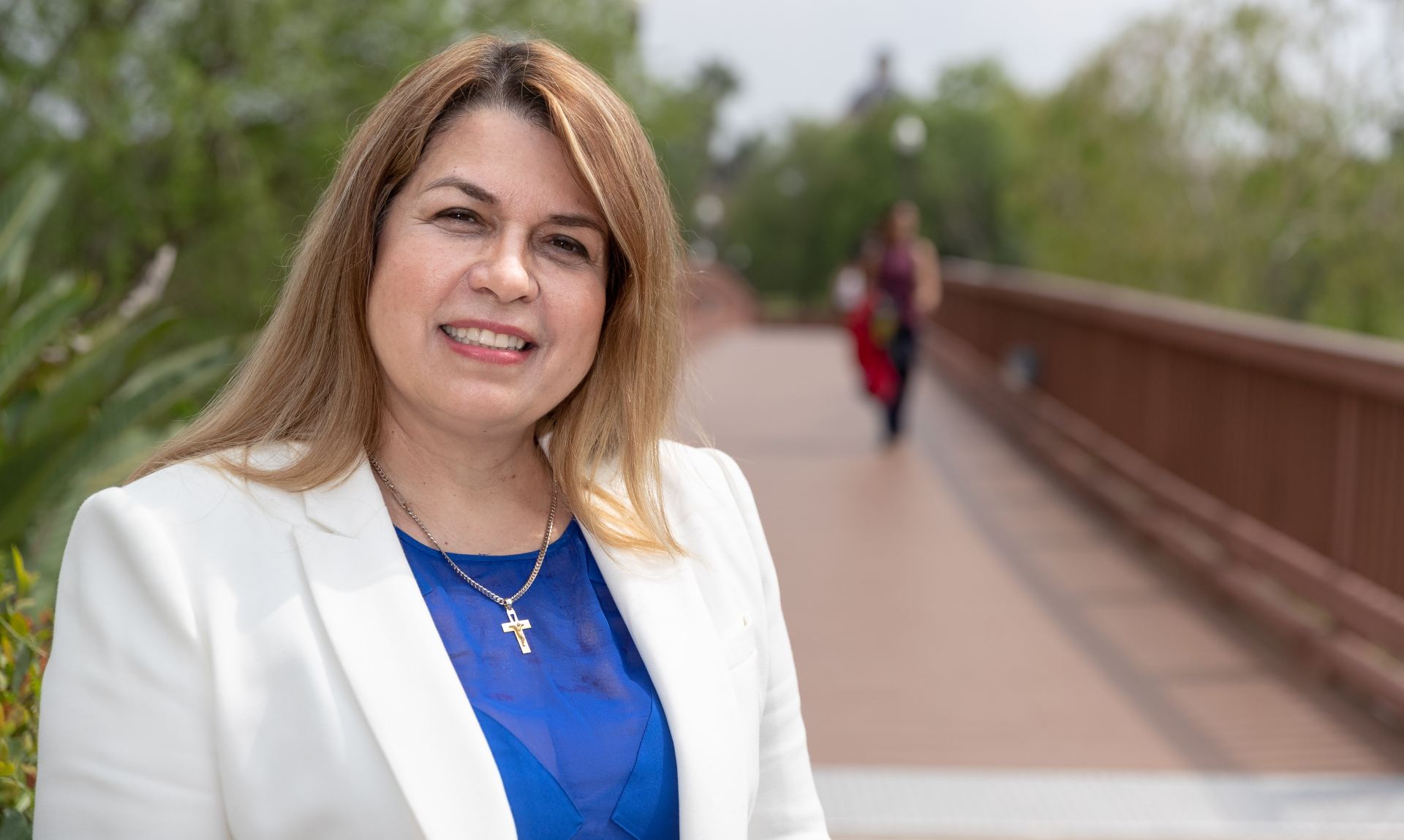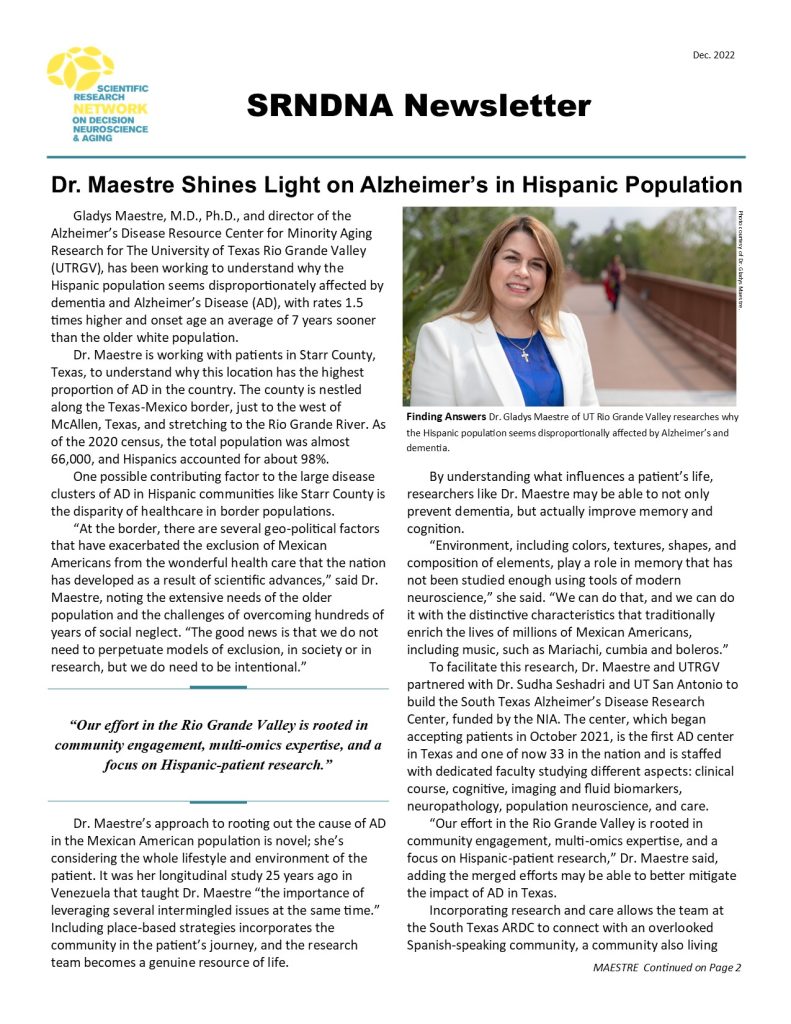Dr. Maestre Shines Light on Alzheimer’s in Hispanic Population
By Sera Gonzalez
December 1, 2022
Gladys Maestre, M.D., Ph.D., and director of the Alzheimer’s Disease Resource Center for Minority Aging Research for The University of Texas Rio Grande Valley (UTRGV), has been working to understand why the Hispanic population seems disproportionately affected by dementia and Alzheimer’s Disease (AD), with rates 1.5 times higher and onset age an average of 7 years sooner than the older white population.
Dr. Maestre is working with patients in Starr County, Texas, to understand why this location has the highest proportion of AD in the country. The county is nestled along the Texas-Mexico border, just to the west of McAllen, Texas, and stretching to the Rio Grande River. As of the 2020 census, the total population was almost 66,000, and Hispanics accounted for about 98%.

One possible contributing factor to the large disease clusters of AD in Hispanic communities like Starr County is the disparity of healthcare in border populations.
“At the border, there are several geo-political factors that have exacerbated the exclusion of Mexican Americans from the wonderful health care that the nation has developed as a result of scientific advances,” said Dr. Maestre, noting the extensive needs of the older population and the challenges of overcoming hundreds of years of social neglect. “The good news is that we do not need to perpetuate models of exclusion, in society or in research, but we do need to be intentional.”
Dr. Maestre’s approach to rooting out the cause of AD in the Mexican American population is novel; she’s considering the whole lifestyle and environment of the patient. It was her longitudinal study 25 years ago in Venezuela that taught Dr. Maestre “the importance of leveraging several intermingled issues at the same time.” Including place-based strategies incorporates the community in the patient’s journey, and the research team becomes a genuine resource of life.
By understanding what influences a patient’s life, researchers like Dr. Maestre may be able to not only prevent dementia, but actually improve memory and cognition.
“Environment, including colors, textures, shapes, and composition of elements, play a role in memory that has not been studied enough using tools of modern neuroscience,” she said. “We can do that, and we can do it with the distinctive characteristics that traditionally enrich the lives of millions of Mexican Americans, including music, such as Mariachi, cumbia and boleros.”
To facilitate this research, Dr. Maestre and UTRGV partnered with Dr. Sudha Seshadri and UT San Antonio to build the South Texas Alzheimer’s Disease Research Center, funded by the NIA. The center, which began accepting patients in October 2021, is the first AD center in Texas and one of now 33 in the nation and is staffed with dedicated faculty studying different aspects: clinical course, cognitive, imaging and fluid biomarkers, neuropathology, population neuroscience, and care.
“Our effort in the Rio Grande Valley is rooted in community engagement, multi-omics expertise, and a focus on Hispanic-patient research,” Dr. Maestre said, adding the merged efforts may be able to better mitigate the impact of AD in Texas.
Incorporating research and care allows the team at the South Texas ARDC to connect with an overlooked Spanish-speaking community, a community also living with co-morbidities common to rural Texas like diabetes, hypertension, alcoholism, and depression.
“Our main contribution is to offer evidence-based solutions, and we need to do the right research at the right place and moment,” Dr. Maestre said.
As an advisory board member for SRNDNA, Dr. Maestra is excited to see how inclusion of ADRD into the network will redefine assumptions regarding aging, especially the excess accumulation of ADRD in certain pockets of the population.
“I am proud that SRNDNA is bringing all the intellectual capital of the network in benefit of research where it matters the most: for those with the higher need,” Dr. Maestre said.

Also in this issue, Pilot Grant winners
View the Dec. 2022 Newsletter here

You must be logged in to post a comment.